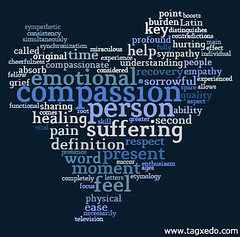Having multiple tools for managing emotions is important for the emotionally sensitive. Different strategies will work for different people at different times in different situations. One way of understanding emotions is through considering them in equation form.
In his book Emotional Equations Chip Conley describes how understanding the connections between your primary emotions, rather than identifying individual emotions, can help you understand yourself, your purpose and your relationships with others.
Conley explains that emotional equations are like grown-up finger painting. If you mix two primary colors, like red and yellow, you get a secondary color, like orange. He notes that primary emotions work together to create secondary and even tertiary emotions. An emotional equation is like having a reminder of how emotions are related to one another and to thoughts and perceptions. An example of an emotional equation is:
Disappointment = Expectations – Reality.
Being aware of the way emotions come about and their contributing factors helps us make choices about our responses and how to manage the emotions. Conley quotes Victor Frankl who said, “Between stimulus and response there is a space. In that space is our power to choose our response. In our response lies our growth and our freedom.” One way we get that space or pause is from mindfulness.
According to Conley, Matt Lieberman has shown that we temporarily lose 10 – 15 points of our IQ when we are emotional. That is not good news for making decisions. Decreasing the intensity of your emotions to make wise choices is clearly important. The best initial action you can take when feeling emotional is to label your emotion. Just the act of labeling helps your logical brain kick back in gear. Emotional equations help us to label complex interactions of our emotions.
In working through the above equation for disappointment, Conley suggests first determining whether you are experiencing frustration or disappointment. In most situations, you are likely to experience a lot of frustration before moving into disappointment. Frustration would mean you still believe you can influence the outcome.
If that is the case, the response called for is determination and perseverance. The action indicated by frustration is to move forward while the action indicated for disappointment is to retreat. If the outcome is fixed, already clear, then the emotion would be disappointment and the best decision is to accept the disappointment and move on to a different project or task. Perhaps a difficulty for many in letting go is in accepting disappointment. But staying in frustration when the outcome is clear is to create suffering. That would be not accepting reality.
When it becomes evident that an outcome may not be what you expected, a way of coping and letting go may be to lower your expectations. You may want to give information to others as well so that they can lower their expectations, which will likely help you accept the outcome with less upset. Delaying giving the information to others will likely make the situation worse in most cases.
Consider this equation for jealousy:
Jealousy = Mistrust divided by Self-Esteem.
Jealousy is the fear of losing something that one has to someone else, often in a romantic situation. The less you trust your partner, the more likely you are to be jealous. Studies have shown that people believed the world was a dangerous place were less trusting than people who were by nature cooperative, trusting and compassionate.
Trust also is based on more personal issues than a world view, such as does your partner tell you the truth and stand by you when times are tough? Has your partner cheated before? Have you cheated? Those who have cheated are more likely to be able to imagine being cheated on.
Self-esteem is part of feeling jealous. The better you feel about yourself and who you are the less jealous you are likely to be.Conley shows the relationship between suffering and despair as
Despair = Suffering – Meaning.
Finding meaning seems to sooth suffering and lessen the experience of despair. Right-brained individuals may find meaning through expressing themselves verbally. Left-brainers may work better with writing. But both can transcend suffering by developing a narrative or theme that helps them see how their experience was a learning experience or otherwise had meaning for them, such as a lesson to take away from the experience.
The meaning may also be more concrete. What is it that life expects from you right now? Do you need to be a role model for your children or family? How can you help others focus on the meaning and not on the bad news or other reason for suffering?
You may find meaning through describing the way you have grown from the experiences you have had. Consider adjectives that describe new habits or behaviors that you have gained.
Conley’s equations remind us that emotions do not often exist in isolation. Understanding the ways emotions combine and affect each other helps us know how to cope.
To create your own emotional equations, watch Conley’s TED talk or learn more about his work, go to http://www.emotionalequations.com/.
Reference
Conley, C. (2012) Emotional Equations:Simple Truths for Creating Happiness + Success. New York: Free Press.




 Acceptance is accepting life on life's terms. Acceptance is also the idea of accepting yourself, with all your human imperfections. That means that instead of fighting your imperfections and your flaws, you accept them. What's the good in that? Well suffering consists of the pain in life that you have no control over, plus the upset and resistance you have about that pain, which you do have control over. If you stop resisting or avoiding the pain, then you lower your level of suffering.
Acceptance is accepting life on life's terms. Acceptance is also the idea of accepting yourself, with all your human imperfections. That means that instead of fighting your imperfections and your flaws, you accept them. What's the good in that? Well suffering consists of the pain in life that you have no control over, plus the upset and resistance you have about that pain, which you do have control over. If you stop resisting or avoiding the pain, then you lower your level of suffering.